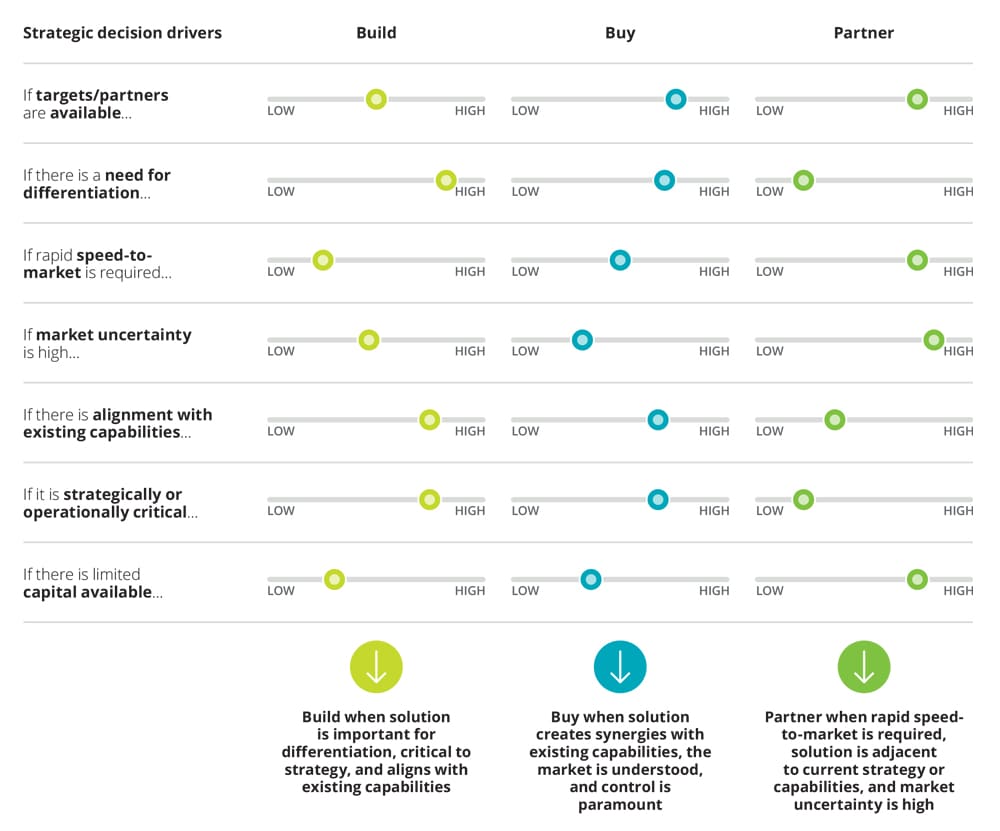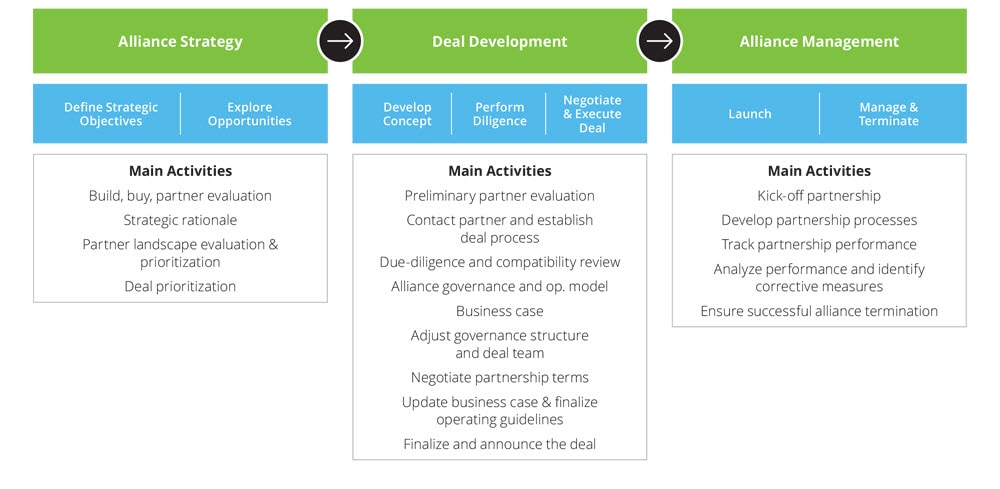Strategic alliances: Powering your inorganic growth strategy has been saved

Perspectives
Strategic alliances: Powering your inorganic growth strategy
The increasing importance of accessing external capabilities
As change accelerates in the business world and technology disruption dominates, organizations need a clear strategy to create or acquire the capabilities required to keep pace and seize new opportunities. Learn how alliances can play a key role in helping organizations understand and overcome current challenges.
Explore content
- New prominence for strategic alliances
- Deciding when to partner
- The strategic alliance life cycle
- Get in touch
- Join the conversation
New prominence for strategic alliances
Entire industries are being transformed as computer-based automation fundamentally changes how business is done. In this fourth Industrial Revolution, the digital technologies disrupting the business environment range from big data analytics to artificial intelligence (AI) to the internet of things (IoT). The result is a shift in which physical and digital technologies are merging to create ever more interconnection. This fundamentally alters the way organizations understand information, make decisions, develop products, and serve their customers and markets.
Amid demands for a faster pace of technology innovation and faced with the increasing complexity of the marketplace, organizations are being forced to reevaluate and broaden their strategies for developing or accessing new capabilities. In-house research and development (R&D) is a powerful tool, but its disadvantages include long cycle times and high costs. Partnerships can help provide faster, less costly, and less risky access to assets and capabilities, particularly in areas that fall outside an organization’s core competencies.
Once an organization has defined its vision and strategy and has identified the assets and capabilities required to win in the market, it’s then faced with the question of how to obtain those assets and capabilities. The organization’s leaders need to be able to answer—with confidence—the question of whether to build, buy, or partner.
Deciding when to partner
The considerations that influence a company’s build, buy, or partner decision can be framed by examining the strategic drivers that are in play.
When industry dynamics are well understood, and an asset or capability is central to a well-defined strategy, an acquisition or internal development may serve as the optimal growth path. In other situations, particularly when there is significant market uncertainty or the proposed initiative isn’t central to the organization’s strategy, a greater number of exploratory partnerships may be the stronger alternative.
In the latter case, forming an alliance can create strategic optionality by allowing organizations to learn rapidly about a new capability or a new market space without devoting an outsized investment of time or capital. In either case, the ability for an organization to acquire or partner may be dictated by the availability of viable acquisition targets or partners.
Given the degree to which competitive dynamics and sources of advantage are changing quickly or are unclear, business leaders must be prepared to work in an unstable environment—to function well amid uncertainty.
As companies continue to develop growth strategies, there will be a need to balance internal factors—including organizational aspirations and capabilities—against external factors such as competition and regulation. The increasing pace of innovation, ballooning valuations, and regulatory uncertainty help to position alliances as valuable alternatives to M&A.
The build-buy-partner framework

The strategic alliance life cycle
A strong alliance management capability is characterized by the ability to formulate a clear vision, define growth pathways, and then develop a partnership with rigorous diligence and effective negotiation. Our strategic alliance life cycle framework can help companies organize and improve their partnering across three key phases:
In the initial phase, the organization should define its overarching strategic objectives and determine if external partnerships can enable that strategy. This requires close alignment among corporate strategy, business development, and functional leadership to assess desired capabilities and examine strategic decision factors.
The most common potential pitfall in this initial phase is misalignment between business strategy and alliance strategy. To avoid this, it’s important to ensure that the strategic rationale for any proposed alliance is set early in concept development. It’s crucial to articulate the anticipated sources of alliance value and to link this value to specific performance metrics such as increased sales, enhanced innovation capability, or operational improvement.
Once strategy for an alliance is formulated and a business sponsor is identified, evaluation of the landscape of potential partners and the screening of partnership candidates begins.
From a short list, the process moves to deal development. This phase is focused on taking the prospective alliance from a preliminary assessment of the strategic fit and partner suitability through a detailed partner evaluation. This entails a combination of due diligence, business case development, structuring, and negotiation.
One of the most common mistakes in the deal development stage is to only focus on the technical nature and commercial return of the joint offering, rather than the nature of the relationships that’s being established.
Goals and incentives for those tasked with supporting partnership development should be carefully considered so that they don’t create adverse incentives that result in substandard partnerships. These teams need to be cognizant of the operational implications of any agreed upon terms, which will often require that they can engage stakeholders across functions who will be responsible for delivering against the alliance’s objectives.
With alliance preparation and development efforts concluded, the partnership can be kicked off and then must be managed on an ongoing basis. Regular monitoring of performance metrics should inform adjustments to alliance design. Ongoing engagement from stakeholders at an appropriate level of seniority will be crucial to ensure that the alliance meets performance targets and delivers on the collective vision that underpinned its creation.
Adequate consideration must also be given to the termination of an alliance when goals have been reached or when the original rationale for partnering is no longer valid. Agreeing on this up front can avoid thorny issues later and improve trust along the way.
As organizations look to enhance their alliance capabilities, they should also explore strategies that expand beyond individual alliances or an alliance program to understand how they may enable—and function within—a broader collaborative ecosystem. Download our full report to learn more.




